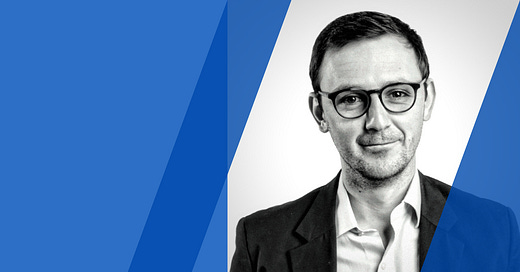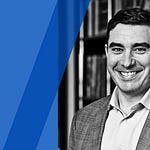This conversation is part of our series, “Best Practices for Building a Great Investment Firm”. Control what types of emails you receive from us.
Are you interested in building an investment firm that attracts endowment capital? Have you found it challenging to capture the attention and capital of well-known institutional investors? Have you generated interest but failed to cross the finish line with the investors you meet?
In an 87-minute recent interview, I had the pleasure of speaking with Sal Del Giudice, a Director in the Investment Research Group at GEM. Sal is an active participant in The Zurich Project and a valued mentor to the MOI Global community. In this wide-ranging conversation, we go deep into issues facing emerging and established managers.
Sal focuses on sourcing new opportunities, directing due diligence and research, and monitoring existing investments at GEM. He is a member of the portfolio strategy group and focuses on both strategic and tactical asset allocation. Sal joined GEM in 2015 and has held several prior roles on the Investment Team, including as an analyst, Senior Analyst, and Associate. Sal received a degree in Economics (magna cum laude) from Davidson College, where he was elected to Phi Beta Kappa. He is a CFA Charterholder.
The following transcript has been edited for space and clarity.
Sal del Guidice: GEM is a leading provider of institutional investment solutions for endowments, foundations, and other long-term investors. We work with our partners in a variety of ways – customized to each of their specific needs – but the most prevalent way that we partner with people today is via an outsourced investment office or an OCIO. In this model, clients entrust us with the stewardship of their entire endowment, and we integrate with them on everything from asset allocation to budget planning, capital campaigns, et cetera.
In addition to our investment research group which I am a part of, we also have a 10-plus-person client portfolio management team who is dedicated to and deeply integrated with our underlying partners.
On the value proposition, it's simple; we provide a more effective governance model, a level of portfolio sophistication, and access to talented investors that these institutions would be unlikely to achieve on their own. Pooling together the resources of multiple underlying partners allow us to invest and manage the portfolio as if we were one large university endowment. We believe that, over time, this should translate into exceptional long-term results.
Philosophically and practically, how we do this is also quite simple. We partner with exceptional people and talented investors across a wide variety of underlying asset classes and opportunity sets – the traditional multi-asset endowment model. There is a lot of nuances in exactly how we look to do this across the various asset classes, but I am sure we are going to get into that, so I will stop there and we can dig it a bit more.
John: I would love to hear about longevity with your clients and how they gain confidence that this is the right approach because it's certainly a high degree of trust required to outsource the entire endowment management.
Sal: Yes, it is. Our deputy CIO – Matt Bank – likes to say that we have to clear the highest trust bar in asset management, taking responsibility and stewardship of an entire endowment. These are perpetual institutions, so we try to have very long duration relationships with our underlying clients.
We spend a lot of time upfront, and they spend a lot of time upfront with us – understanding our process, our philosophy, and our approach – many of the things that you and I will get into today to make sure that it's a great fit. That's very important to us as well.
We really want to be true partners with our clients and our investors – in the same way we're true partners with the managers in our portfolios – to make sure that it's a two-way street, and that they're getting the value they need out of us.
We are not a vendor who flies in quarterly to meet with their investment committee. We really are deeply integrated. That's a big piece of having that large-client portfolio management team.
The duration is long, the relationships are great, and we feel that continuing to evolve is our responsibility. They're entrusting us with the entirety of their corpus, so we have to continue to stay on the front foot and make sure that we're delivering value for them across a wide variety of market environments.
John: How is your team organized? How do you think about the structure of the portfolio?
Sal: Because we work with our underlying partners to tailor their portfolios to their specific needs, this can look a little bit different in terms of portfolio structure by client, but what I'm going to do is describe our typical endowment-style client’s portfolio then get into the team.
For a typical endowment style client, we start by building policy portfolios which target risk exposures across a wide variety of underlying factors – those factors being equity, credit, real estate, commodities, treasuries, and tips.
Given our endowment-style clients need to balance the long-term growth of their capital with the requirement of funding annual spending needs, striking a balance between these different risk factors is a key element.
Once we've set this policy portfolio, it's the investment research group's job to bring that to life by finding the best bottom-up opportunities within the constraints of that policy portfolio. Given that many of the underlying investments can touch one or more of the traditional asset classes, every investment we make is very simply just a purchase of cash flow streams.
We think it makes sense to have a team who can look across a wide variety of opportunities, so we are mostly structured as generalists with some specialization in areas of the portfolio that are more execution-intensive – like our independent sponsor program.
I know we're going to get into a lot of how we think about our manager selection process and building that funnel, so let me take a second to talk about our long-only portfolio because I know you and the MOI community are primarily focused on public stock picking, and I think it's critically important to hit on that philosophy and foundation upfront because it really informs the way that we build our process. Does that work for you?
John: Yes, that's great.
Sal: Within our long-only equity portfolio, that serves as the equity driver – next to private equity and venture capital – in the portfolio. The goal is very simple. We are here to beat the MSCI ACWI index – full stop. That is our North Star.
When we think about that goal of outperforming the MSCI ACWI over a long period of time, we look at what tools we have available to us to achieve that goal. There are really only three ways to outperform the index over time – either via allocation effect which is picking certain geographies, sectors, or styles of investment; selection effect which is good stock-picking within those sectors, geographies, or styles of investment; and then, leverage or market timing.
I group leverage and market timing together because holding cash is a form of negative leverage, and that really is market timing. It’s the degree of investedness over underinvestedness at any given point in time.
A key learning that we've had – a key thing that I think separates running an endowment-style portfolio from maybe many MOI listeners who are fund managers – is that we drive a school bus and fund managers drive a Ferrari.
Here's what I mean by that. Fund managers are concentrated enough that they don't have to worry much about allocation effect or maybe even market timing. Because of selection effect, the degree of which they get from any individual stock pick is very large and can drown out that impact.
However, in an endowment-style portfolio, we have many underlying manager partners, and all of those holdings aggregate up to a level where allocation effect becomes very meaningful to us. We want to win, and I want to be clear primarily on selection effect.
However, allocation effect over time is more volatile in a year-to-year or even three- to five-year basis. If you were in semiconductors or not in semiconductors over the last two years, or whether you were US-biased or maybe European-biased over the last decade, those things matter a lot more in more diversified endowment style portfolios.
Given that we don't think there's a massive edge in allocation effect, and given that we want to win primarily via selection effect, our job is to squeeze down that volatility of allocation effect, so that the selection effect can shine through, and that informs the way that we build our portfolio from a long-only perspective.
We're very deliberate in looking at our sector exposures; looking at our geographic exposures; looking at our style exposures – be it value growth or quality-oriented businesses; trying to tilt the portfolio from an allocation effect perspective towards areas that should be long-term winners – either higher returns on capital or having secular tailwinds; but primarily, trying to bring down the risk, so that the great selection effect work of our underlying managers can shine through
John: That makes sense. I was also wondering whether there are big differences in the endowment spending rules of your clients. If so, how does that inform the portfolio construction?
Sal: Absolutely. Depending on the underlying client and their near-term and long-term spending needs, that really informs two things – one, how much risk they can take in the portfolio in terms of equity beta, and how much illiquidity they can take in their portfolio in terms of private assets. We have active conversations with our underlying partners to understand those dynamics.
If somebody is more reliant on endowment draws over a shorter period of time, it most likely makes sense to have less equity risk in that portfolio and less illiquidity whereas, if somebody has perhaps a very active donor base or the ability to raise capital elsewhere, perhaps it makes sense to be more equity-oriented and more illiquid in an effort to grow the corpus.
John: Let's talk about the manager funnel and your manager selection criteria. I'd love to hear how you think about that?
Sal: I would say our funnel starts as an investment funnel, and managers play a very key role in that.
Every decision is three things. What are we looking for in our portfolio? How do we think that exposure is best executed? Who do we want to partner with to give us that exposure?
Again, using that top-down framework, sometimes, there are areas in our portfolio where we have a hole versus a global equity index and, again, we want to make sure that allocation effect doesn't swamp selection, so we need to fill that hole.
We say, “What are we looking for?” Perhaps it's a certain beta. Let's use US exposure for an example. Beta is not a bad word. If you are underway to beta and you don't own it, and if you don't have an explicit view that that beta is worse to own, you should go out and find a way to own it.
The next thing we say is, “This is what we need in the portfolio. How should we get that exposure?” This is where we look at dispersion and opportunity for outperformance. “Is this a beta or an opportunity set where there is a large amount of dispersion between the top and bottom performers?” That would suggest a very ripe opportunity set for stock picking.
If the dispersion was extremely tight, maybe there's not room to generate alpha via stock-picking and owning this either passively or in a highly liquid, low-fee way is the right decision to make.
Is the opportunity set large enough? Do the indices that are available to own cheaply actually reflect the underlying opportunity set? There have been many markets over time where the index construction has not been aligned with our perception of the opportunity set. That forces you into active management.
The vast majority of our portfolio is with third-party active managers. That comes to the third pillar of the who. Who do we want to follow with? Who do we want to partner with? The who really comes down to underwriting their ability to generate alpha versus the passive benchmarks.
Our underwriting philosophy really comes down to six key pillars – strategy, opportunity set, structure, investment analysis, portfolio management, temperament and team.
We've talked about strategy and opportunity set in terms of looking at dispersion and returns on equity and breadth of the opportunity set.
Structure – what is the manager's underlying liquidity? What are their fees? Do they have a business structure that's resilient?
We often do a lot of market mapping upfront to understand people who are executing similar strategies, going after similar opportunity sets. Are there structural differences where one person wants to lock up our money for three years and the other is more willing to give it to us quarterly?
When we dig into the specifics of any individual manager, it's really focusing on that investment analysis, their portfolio management, their temperament and their team. Those four pillars really interact with one another.
So many conversations you hear about markets and earning excess returns talk about having deeper investment analysis, about having better understandings of businesses, and about edge, but in our view, portfolio management is equally important. Are you able to monetize that insight and edge that you have versus the market?
Portfolio management – buying and selling and sizing – is your primary mechanism for translating that advantage into returns for LPs. Do you have a temperament in a team that is going to enable you to withstand the inevitable drawdowns in your strategy?
If you build an extremely large team upfront, that likely burdens you with fixed costs and places more performance pressure on you in the interim which can impact your temperament and which clouds judgement on investment analysis and leads to poor portfolio management decisions.
These things are all interrelated, but what we're really looking for is some kernel of excellence – something that says, “I have talked to a thousand managers this year,” which is not an unrealistic number given the breadth of our team – “and this person stands out. They are doing something exceptional versus the rest of the market that we've had a conversation with, and that's worth looking into more.” That is the primary way where, if somebody enters our funnel, we decide to spend a lot more time with them.
John: How heavily does track record weigh? Or how do you evaluate the track record of a manager?
Sal: We have invested with managers with no technical track record and managers with extremely long track records.
Track record is the evidence of skill. It is a piece of evidence of skill – a very strong one – but there can also be other pieces of evidence of skill – whether they have networks where people have pointed to them repeatedly as the smartest person they know.
That's one reason why we travel a lot to understand who's the smartest person you know. If you ask 10 people and they all say the same person, that's a very good lead.
Other pieces of evidence might be a track record of success at a wide variety of firms – even if it's not a formal investment track record.
What we focus on are data points that have predictive value or allow us to believe that something is repeatable. We don't talk about good or bad track records. We talk about repeatable track records or data points that give us predictive value towards the future which is really what we're trying to handicap.
When we analyze a long-term track record, we are trying to separate the betas and alphas. How much of this was the manager making an allocation decision perhaps making it correctly which they get full credit for but we view as a less repeatable strategy than getting selections go right?
Maybe the track record doesn't look as strong because they were unfortunate from an allocation perspective, but they have demonstrated really strong selection and – in the context of our portfolio – we can take a more of that allocation risk to go after the selection risk.
It's really trying to break track records or break people's backgrounds into predictive data points and repeatable data points. Yes, very long duration track records are the strongest evidence of that, but they are also rare in investing, so we have to find other ways to be creative.
John: Let's talk about some dealbreakers for you. What are some criteria you use to exclude managers from the funnel?











